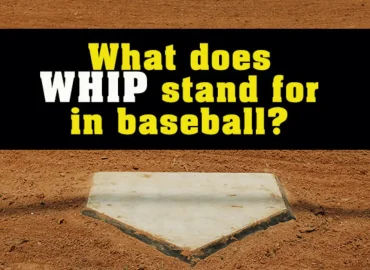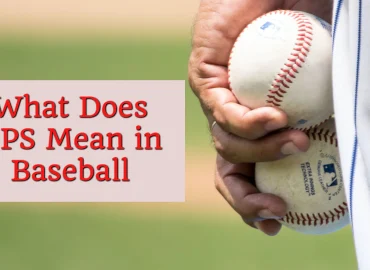ERA stands for Earned Run Average. It is a statistic used to measure a pitcher’s effectiveness. ERA shows how many earned runs a pitcher gives up in nine innings. An earned run is one that happens without the help of errors or passed balls. The lower the ERA, the better the pitcher is at preventing runs.
ERA is important because it helps teams evaluate pitchers. It gives a clear picture of a pitcher’s ability to stop the opposing team from scoring. A low ERA usually means the pitcher is performing well. Managers and scouts often use ERA to compare pitchers. It is one of the key stats in assessing a player’s overall performance and consistency.
Table of Contents
What is ERA in Baseball
ERA, or Earned Run Average, is a key statistic in baseball that helps measure a pitcher’s effectiveness. It calculates how many earned runs a pitcher allows per nine innings pitched. To find the ERA, you divide the total number of earned runs given up by the total innings pitched and then multiply the result by 9. An earned run is any run that scores without the help of errors or passed balls.
The formula for ERA is simple: ERA = (Earned Runs / Innings Pitched) × 9. This gives a standardized measure to evaluate pitchers across different game situations and seasons. A pitcher with a low ERA is generally considered more effective at preventing runs, while a higher ERA suggests they are giving up more runs.
ERA is used by managers, coaches, and analysts to assess a pitcher’s performance. It’s a critical stat for comparing pitchers, especially when deciding who should start games or come in as a reliever. While ERA is an important metric, it doesn’t capture every aspect of a pitcher’s performance, as it doesn’t account for factors like defense or ballpark effects.
How ERA is Used in Baseball
ERA is used in baseball as a key measure of a pitcher’s effectiveness. It helps teams assess how well a pitcher is preventing earned runs during a game. A pitcher’s ERA is calculated by dividing the total number of earned runs they allow by the number of innings they pitch, then multiplying by 9. The resulting number shows how many earned runs a pitcher gives up on average per nine innings. A low ERA suggests good performance, while a high ERA may indicate struggles.
Teams use ERA to evaluate whether a pitcher is suitable for starting, relieving, or closing. If a pitcher has a low ERA, it means they are keeping the opposing team from scoring, making them valuable in key situations. Conversely, a pitcher with a high ERA may be less reliable, and coaches may consider other options or try to help them improve.
ERA is also helpful when comparing pitchers across different teams and leagues. It allows for an objective analysis of performance, especially when determining which pitcher might be more effective in a particular game or series. ERA can highlight a pitcher’s consistency over the course of a season, showing whether they are maintaining solid performance or struggling with inconsistency.
ERA is one of the most important statistics for evaluating a pitcher’s skill. However, it is just one aspect of their overall performance, and other factors like defense or the ballpark’s size can also influence the results.
Factors Affecting ERA
Defense Quality
One major factor affecting ERA is the quality of the defense behind the pitcher. Strong fielders can help prevent errors and keep runs from scoring. If the defense is weak or makes mistakes, it may lead to unearned runs, which can unfairly increase a pitcher’s ERA.
Ballpark Influence
The size and design of a ballpark can impact a pitcher’s ERA. Some ballparks are more hitter-friendly, with smaller dimensions or weather conditions that favor batters. A pitcher’s ERA can be higher if they play in such conditions. In contrast, pitchers in larger or more pitcher-friendly parks may see better results.
Pitching Strategy
A pitcher’s approach and the type of pitches they throw can influence ERA. Strikeout pitchers tend to give up fewer earned runs compared to those who rely on ground balls, which may be more vulnerable to errors. Pitching styles and the ability to control the game situation also impact the outcome.
Game Situations
The context of the game, such as facing tough hitters or pitching under high-pressure situations, can also affect a pitcher’s ERA. Pitchers who perform well in clutch moments may maintain a lower ERA, while others may struggle in similar situations, leading to higher earned runs.
Interpreting ERA Values
Low vs High ERA
A low ERA is generally a sign of a strong pitcher who is effective at limiting earned runs. Typically, an ERA under 3.00 is considered excellent, while an ERA between 3.00 and 4.00 is good, especially in a competitive league. A pitcher with a low ERA is usually able to keep the opposing team from scoring consistently. On the other hand, a high ERA, typically over 4.00, indicates that the pitcher is allowing more runs and may be struggling with their performance. A high ERA could suggest problems with command, control, or facing tough hitters.
ERA Leaders and Benchmark Values
ERA leaders are usually the top-performing pitchers in a league or season. These players consistently allow fewer earned runs and often play a major role in their team’s success. Benchmark values for ERA can vary by league and season, but generally, pitchers with an ERA under 3.00 are considered elite. Comparing a pitcher’s ERA to the league average helps gauge their performance relative to others. A pitcher with an ERA significantly below the league average is usually considered to be performing at a high level.
Limitations of ERA
Context of ERA in Different Game Situations
While ERA is a useful statistic, it doesn’t account for all aspects of a pitcher’s performance. It doesn’t consider the context of the game, such as whether a pitcher is coming in during a high-pressure situation or if they’re facing particularly tough hitters. These factors can affect how well a pitcher performs but are not reflected in ERA. Additionally, ERA does not take into account situations where a pitcher might be asked to pitch in challenging conditions, like with runners on base or in late innings.
Situations Where ERA Might Not Tell the Full Story
ERA also fails to account for defense and ballpark conditions. A pitcher with a higher ERA could be performing well in a game but might be hurt by poor fielding or a hitter-friendly ballpark. Similarly, ERA doesn’t factor in the number of walks or home runs a pitcher allows, which can also influence the overall effectiveness of their performance. While it provides valuable insight into a pitcher’s ability to limit runs, ERA doesn’t tell the full story of their skills and contributions.
Conclusion
ERA is an important statistic that measures a pitcher’s effectiveness in preventing earned runs. A lower ERA typically indicates better performance, showing that the pitcher is keeping runs off the scoreboard. It helps coaches, teams, and analysts assess a pitcher’s ability over a season or career.
However, ERA has limitations. It doesn’t account for external factors like defense or ballpark conditions, which can impact the results. While ERA is a valuable tool, it’s important to consider other statistics and the context of each game to get a complete picture of a pitcher’s performance.








See more
March 3, 2025 at 12:21 pmI appreciate your honesty and transparency in sharing your insights.
https://madhatter2341.livejournal.com/934.html
📙 Message; Withdrawing NoSM25. WITHDRAW =>> https://graph.org/GET-BITCOIN-TRANSFER-02-23-2?hs=dba8de8fc8be7b0e86e4dceae6fa9246& 📙
March 8, 2025 at 11:26 am2tzzbw
Ignacio
March 8, 2025 at 2:13 pmI admire your enthusiasm for sharing knowledge with your readers. Thanks for all that you do.
https://tmcs.site
📐 Notification; Withdrawing NoQR48. VERIFY >> https://graph.org/GET-BITCOIN-TRANSFER-02-23-2?hs=dba8de8fc8be7b0e86e4dceae6fa9246& 📐
March 15, 2025 at 12:02 pmmn4f6a
Frank
March 15, 2025 at 8:35 pmYour blog provides an abundance of valuable information on a variety of subjects. Thanks for all that you do.
https://www.screenshots.wiki
Marianne
March 16, 2025 at 10:28 amReading your blog posts feels like attending a valuable class.
https://buzzshrink.website
📨 We send a transfer from us. Continue >>> https://graph.org/GET-BITCOIN-TRANSFER-02-23-2?hs=dba8de8fc8be7b0e86e4dceae6fa9246& 📨
March 19, 2025 at 3:48 pm4n8dgw
📝 Email- You got a transfer №QE75. WITHDRAW > https://telegra.ph/Binance-Support-02-18?hs=dba8de8fc8be7b0e86e4dceae6fa9246& 📝
March 20, 2025 at 10:40 amty1zhk
🖱 You have a message(-s) # 533431. Go >> https://graph.org/GET-BITCOIN-TRANSFER-02-23-2?hs=dba8de8fc8be7b0e86e4dceae6fa9246& 🖱
March 22, 2025 at 5:42 pmycumf0
🔧 + 1.930840 BTC.NEXT - https://graph.org/Message--05654-03-25?hs=dba8de8fc8be7b0e86e4dceae6fa9246& 🔧
April 10, 2025 at 4:53 pmuz86za
🗂 Message: SENDING 1,600376 BTC. Verify => https://graph.org/Message--05654-03-25?hs=dba8de8fc8be7b0e86e4dceae6fa9246& 🗂
April 15, 2025 at 2:10 amb0he2q
🛎 Ticket; TRANSFER 1,761179 BTC. Confirm =>> https://graph.org/Message--05654-03-25?hs=dba8de8fc8be7b0e86e4dceae6fa9246& 🛎
April 16, 2025 at 4:45 ama3259r
Matt
April 16, 2025 at 3:20 pmI’m extremely inspired with your writing talents and also with the
layout for your blog. Is this a paid theme or did you customize it
yourself? Anyway stay up the excellent quality writing, it is uncommon to peer a nice blog like this one these days.
Stan Store alternatives!
Feel free to surf to my homepage Glen
📌 + 1.410210 BTC.GET - https://graph.org/Binance-04-15?hs=dba8de8fc8be7b0e86e4dceae6fa9246& 📌
April 25, 2025 at 2:12 amx4eezf
binance
August 3, 2025 at 6:05 amCan you be more specific about the content of your article? After reading it, I still have some doubts. Hope you can help me.